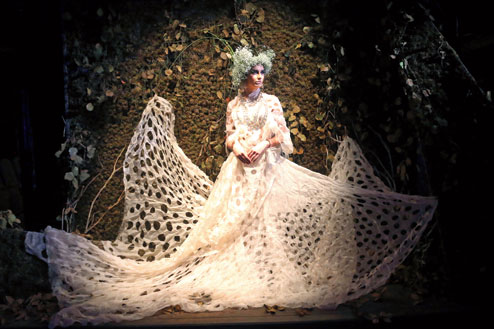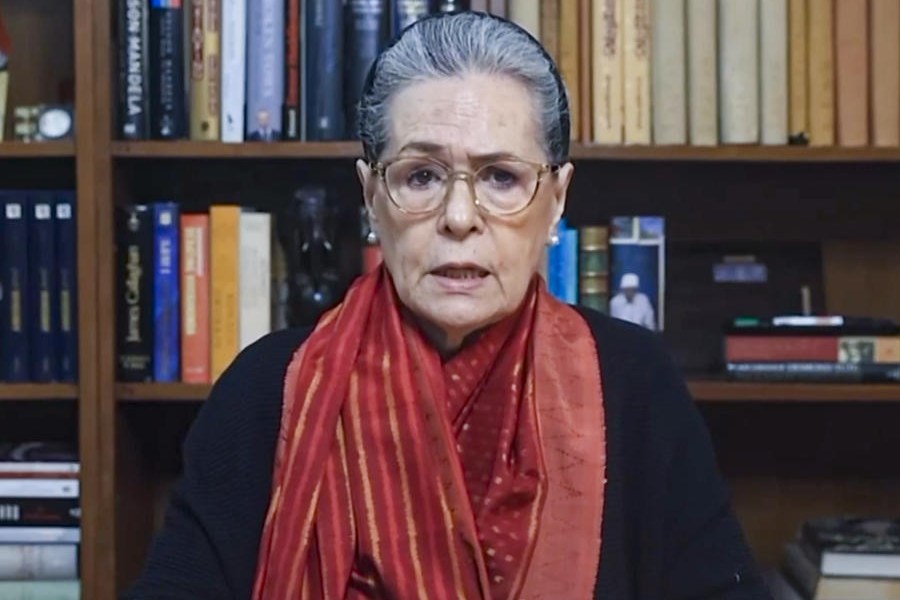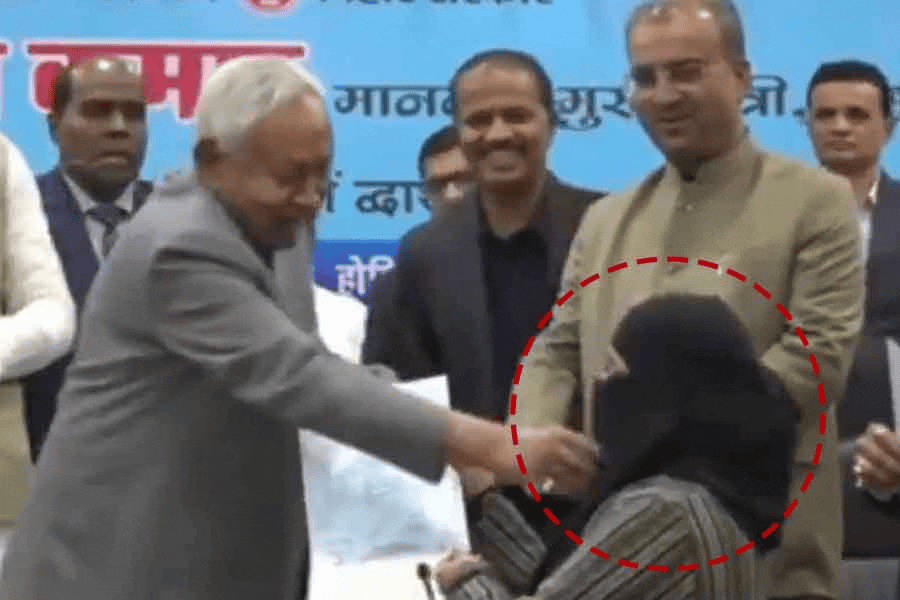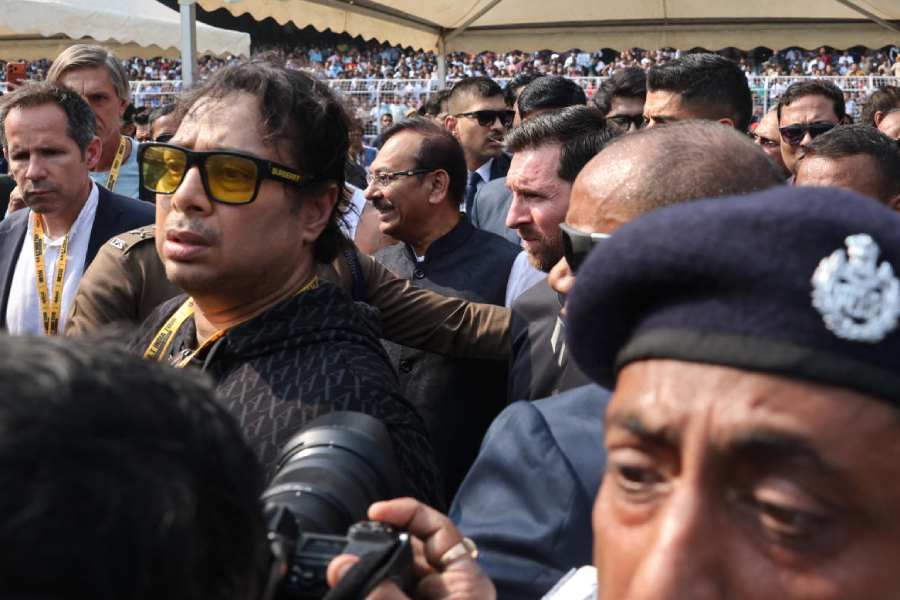


In India, the younger generation is a huge driving force. You can’t ignore the fact that these are the people who are influencing fashion. I feel it’s the youngsters who define and shape the future of fashion for us. From my interaction with a lot of these young kids, and some of the young brides who come to me — the so-called millennials — I have made certain observations.
I have observed how they think… like, if you give a millennial the choice between owning a diamond necklace and a backpacking holiday around the world, they would choose the latter. You give them a choice of owning a luxury car or using Uber without any headache, they would go for the latter. They don’t want jobs in multinationals, they would rather work in start-ups or do their own start-ups. I don’t expect any of these kids to do the same job for 20 years, they need to do something new every few years, if not months or days. Because of extreme exposure to television, social media and so on, their attention span is very low… they know everything and they get bored very fast.
So, ‘what next?’ is the big question all the time and the same thing applies to fashion. They get bored really fast and they are moving very quickly. That’s what I observe in fashion, too, and the change is so extreme and so quick that it’s almost mind-boggling. Fashion is really changing. That’s how I see 2018.
The young influencer
The influence of social media on fashion in India has become extreme. There is a part of this generation to whom how they are perceived by others on social media has become of utmost importance. I am going to divide this generation into two groups of people. One set of people who have extreme international exposure, to Western culture. And the other set who do not have physical exposure but they are very observant of trends, through social media.
I think 2018 will see this divide much more. The first set is made up of people who are very socially conscious, who are independent, self-conscious; who are very exposed to international fashion and the more they become exposed the more self-conscious they become. These are people who want to stand out and make a statement and they take risks.
A very simple example would be the exposure to the hip-hop music culture. Brands like Supreme New York are choosing streetwear; they are changing the world. Even a serious classic brand like Gucci, see what is happening now. So, these people are rebellious, they don’t feel scared to stand out… these are the people who are accepting brands like Supreme. Rapper ASAP Rocky wrote a song based on Raf Simons (Belgian designer); it was called RAF. The collaboration of Supreme and Louis Vuitton, the collaboration of Coco Capitan and Gucci, the collaboration of Junior Watanabe and North Face... these kinds of collaborations are happening internationally.
In India, too, this generation is so exposed to what is happening and there are a lot of kids in Calcutta wearing Supreme. It is amazing how they want to wear unisex clothing, genderless clothing. They are not scared to do different things.
Then there is the lot who are happy to follow social norms and be part of the crowd. They want to do what their friends have done. They want to be accepted. I just feel this divide is getting wider.

What the bride wants
In the fashion in the bridal market in India, which actually drives a large number of designers, you see the same divide. I get a lot of brides who are very conscious, they love the fact that you are customising for them, thinking for them. They are very happy to not be able to physically see anything but to have that half-an-hour meaningful conversation with the designer that will result in something special. That is one sort of bride that is increasing in number.
There is also the other bride who wants to wear something because she saw someone on Instagram wearing something and brings that image with her. So that divide is also increasing. More and more brides are also going to international designers. At least for one of the functions they want to wear an international designer.
But I have observed that as we go forward, there are more and more brides whom we don’t even show a single sample. I just share my thoughts, I try to understand who they are and that’s what matters to them. It does not matter that they will not be looking like someone else or they will not be sticking to the norm. That’s a very big trend that I see going forward. The heart starts to matter much more than how much money is spent. What goes behind, what is the meaning… sometimes they bring their grandmother’s old sari… they are very internally aware and for them it is not about wasting that money, but using that money up.
They are conscious about what is a waste and what is not. It is very interesting to observe that they are driving fashion because when they are doing that, you are actually pushing your own boundaries.

Experiment, customise
So in 2018, for me, fashion is about pushing boundaries and that’s what I am going to do. All of 2018 I don’t want to stick to what should be, I want to do what can be. I am very influenced by what happens all over the world. The change of identity in fashion is so strong... change is being accepted like wildfire. So I am going to push that button and see which doors open.
The blingier the better, the louder the better, the more excessive the better — that is what fashion is going to be in 2018. I am not just talking about India, I am making a general observation. Change is the future. There are enough people pushing to go there. People are accepting any kind of change blindfolded and beautifully. As a designer, you are allowed to take any garment and push its boundaries. So it’s about experimental clothing. Whether it’s Indian fashion or international fashion, experimental clothing that is individual is the way to go.
Customisation is the key and women and men of this generation are much more aware of their personalities and tend to express themselves due to exposure to the Western individualistic culture. They choose clothes that fit their personality types.
Mass customisation is the future and technology may play a major role in it. The only way for brands to survive is to differentiate.
So whether it’s the sari or the lehnga, the kind of variations that are coming up, sometimes a bit cartoon-y and sometimes fantastic, but it is happening. When was the last time you saw someone wearing a beautiful blouse and a sari just like that? Now you see someone wants to drape the sari differently, someone wants to wear it with a jacket… so people are on that experimental trip and I see that happening more and more. Although when it reaches its peak, I feel suddenly people will go back to classics. It’s going to happen, it’s like a circle; 2018 we are going to keep pushing and in 2019 slowly we will start reverting. That’s what I think in my humble observation.
Global streetwear
Each and every single brand it seems is accepting streetwear. I mentioned Gucci earlier, now look at what a serious brand like Fendi is doing, it’s insane. They did pompoms with Karl Lagerfeld’s heads! Look at their sunglasses! And the best part is the more they are experimenting, the crazier it’s getting and the more people want it.
It’s a revolution in the world of fashion. You cannot be middle of the pack. Change is becoming the order of the day. If you are middle of the pack then you have no value. Even a serious classic brand like a Celine, you suddenly see a splash of colour, and you think ‘Celine?! Really?!’ So this is happening all over the world.
I just think the old order is finishing, it’s time for new.

What’s our future?
So there is this huge section of Indian youngsters who, with their exposure through television, Internet, Instagram or whatever social media they have access to, are giving up Indian clothing and going for regular western wear. This year I was observing, most of the girls were wearing T-shirts and jeans. I feel that more the exposure, the more this is going to happen. It is a scary observation I would say… who’s going to bring Indian culture back? This is a huge trend and I see this becoming stronger and stronger.
There are young Indian designers who are making completely Western clothes… fantastic things… no complaints there… like oversized clothes, antifits, deconstruction, non-embroidered. So there is an entire lot of people doing this space… and these clothes are getting accepted more and more.
Also, there is a huge segment of people who want to wear a particular brand for the sake of it, not because they relate to the brand. That’s influencing Indian fashion majorly.
Then, of course, in India we are highly influenced by Bollywood, and one of the influences I see is that the culture of gowns is seeping in. People see the actresses wearing these clothes on red carpets and all and it trickles down to Indian fashion. People wear gowns to their weddings! I mean your culture does not allow it; your body, your height do not allow it. I am not demeaning it, but that’s my personal observation.
That confuses me — who is going to look after the future of Indian fashion? Are we going to lose our craftsmen, our textiles? Or after 10 years, do I have to start telling people, please own a piece of embroidery, because you may not get it?
— As told to Smita Roy Chowdhury











